How do you measure flour properly? Do I need to sift it? Can I substitute unbleached flour for bleached flour? What is cake flour? All your questions answered right here!
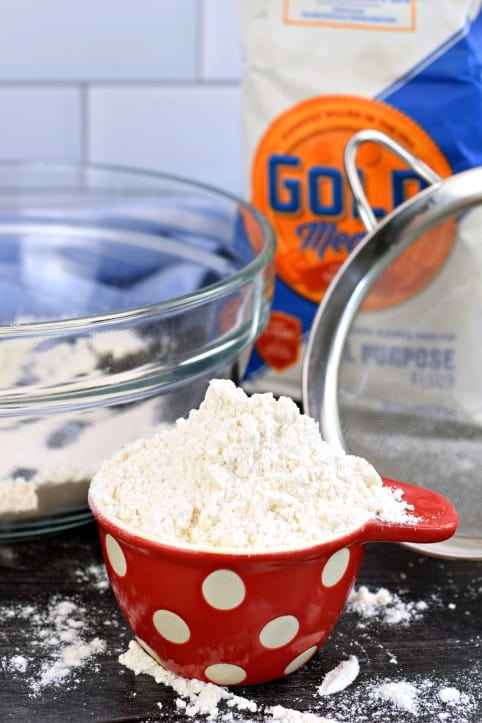
Measuring Flour
Depending on the recipe, there are different ways to measure flour:
- Sifted before measuring
- Fluffed or Aerated
- Weighed
Before we get into the nitty-gritty of measuring let’s address a few questions you might have.
What are the different types of flour?
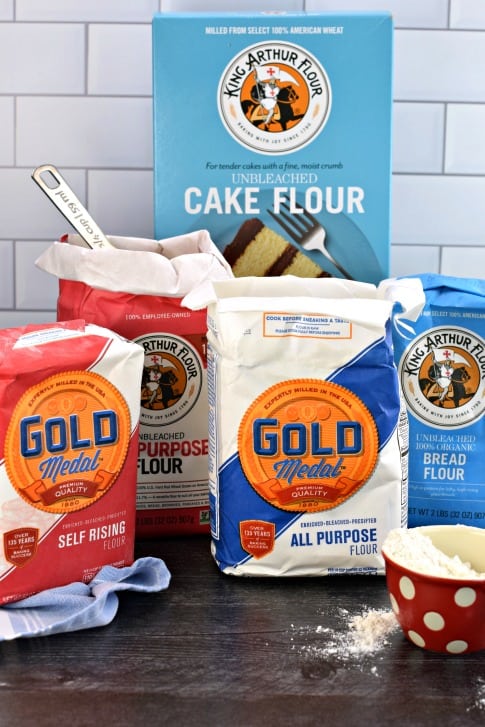
The most common types of flour are:
- Bleached All-Purpose Flour
- Unbleached All-Purpose Flour
- Cake Flour
- Bread Flour
- Self-rising Flour
Can I substitute unbleached flour for bleached?
- YES! You can definitely substitute one for the other. There is absolutely no detectable nutritional difference between the two and they will cook the same.
- However, some products may turn out with a slightly different color if you use unbleached flour when bleached is called for. This is true mostly for recipes that require a pure white color in the finished product.
- Unbleached flour and bleached flour weigh the same and can be subbed for each other cup for cup.
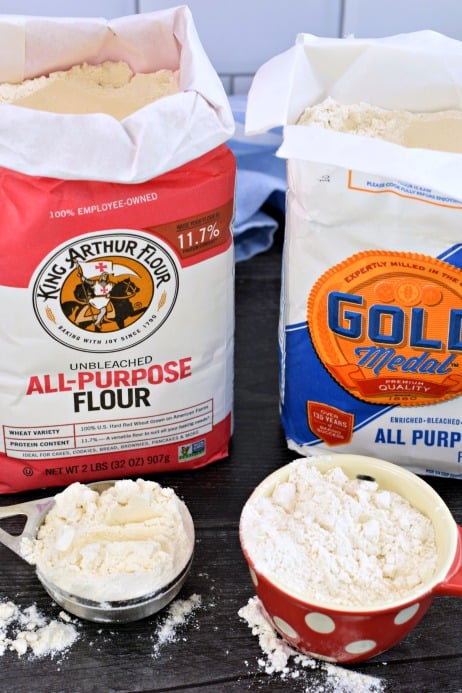
What is Cake Flour
Cake flour is a finely ground and delicate milled product. It has a low protein content that will produce a lighter, airier product.
Can you substitute all purpose flour for cake flour?
Yes you can.
If you want to substitute all purpose flour for cake flour you would need to reduce the amount of all purpose flour used and add in cornstarch.
- For every cup of cake flour used you would need 3/4 cup all purpose flour PLUS 2 Tablespoons cornstarch.
What is Bread Flour?
- Most leavened, or yeast, breads require a flour with a higher protein (gluten) content. Bread flour contains this higher protein content.
- You can substitute bread flour for all purpose flour cup for cup, but bread flour products tend to have a chewier texture, whereas all-purpose flour recipes tend to be less so.
So, if you love bread that has a good, chewy crust, you should stick with traditional bread flour for that recipe.
Substitutions for Self-Rising Flour
Self Rising Flour is a combination of all-purpose flour, baking powder, and salt.
To substitute all purpose flour for Self-Rising flour you will need 1 cup of all-purpose flour, plus 1 1/2 teaspoons baking powder plus 1 teaspoon salt.
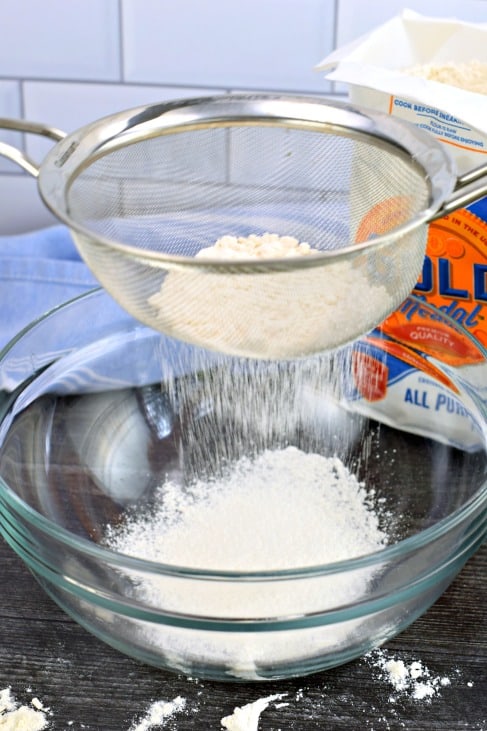
How to Measure Flour
Measuring Sifted Flour
Measuring Sifted Flour means you measure the flour after it has been sifted.
For this you will need:
- a large bowl
- a strainer or sifter
- a spoon
- a flat edged butter knife or other straight edged utensil
- measuring cup
How to Measure sifted flour
- Hold strainer or sifter over large empty bowl
- Begin transferring flour from flour container to strainer using the spoon, one-three spoonfuls at a time.
- Shake the strainer over the bowl, trying to contain as much flour as possible to the bowl.
- Spoon sifted flour into measuring cup.
- Allow flour to mound over the top of the cup.
- Using straight edge of butter knife scrape off the mound of flour.
- If a hole appears add another spoonful of flour and scrape off again with knife.
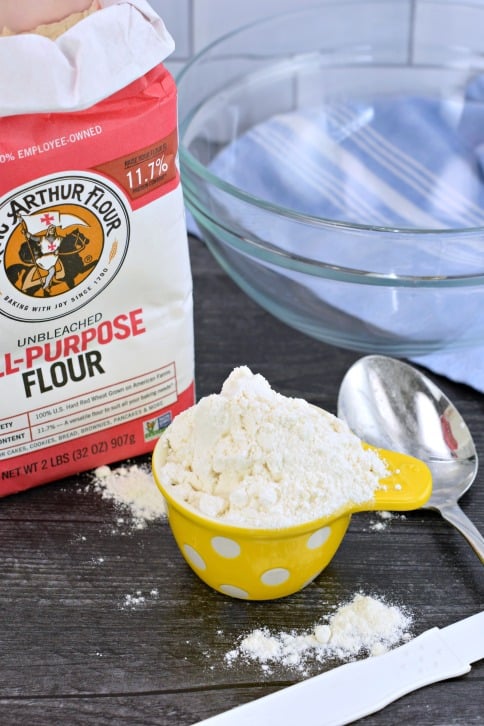
Measuring Fluffed/Aerated Flour
Measuring fluffed flour is different from sifting in that instead of transferring the flour from one container to another and then another you use a spoon or fork to stir and fluff the flour. This allows air to be incorporated into the flour, but not as much as in sifted.
This is the method I use 99% of the time in my baking. I open my container and give it a stir. Then SPOON the flour into a measuring cup.
PRO TIP: DO NOT SCOOP YOUR MEASURING CUP INTO THE FLOUR. This leads to excess amounts of flour in baking!
For this method you will need:
- a spoon or fork
- a flat edged butter knife or other straight edged utensil
- measuring cup
How to Measure fluffed flour:
- Stir the flour in the container using a spoon or fork for about 10 seconds.
- Spoon flour into measuring cup.
- Allow flour to mound over the top of the cup.
- Using straight edge of butter knife scrape off the mound of flour.
- If a hole appears add another spoonful of flour and scrape off again with knife.
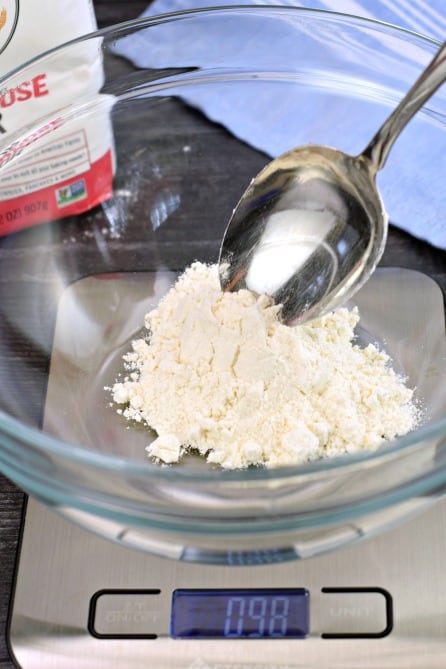
Measuring Flour By Weight
Some recipes (especially those from across the pond) require measuring flour by weight. One cup of flour weighs about 120 grams or 4.5 ounces.
For this you will need:
- a food scale
- bowl
- spoon
How to Measure flour by weight
- Place bowl on scale
- Zero out or tare your scale to prep it for measuring.
- Spoon flour onto scale.
- Add flour to the scale a little at a time until the correct weight is reflected on the scale.
- If you accidentally put too much flour on the scale, no worries, just put some back.
- Once you have enough flour by weight it is ready to be added to your recipe.
Important Notes on Measuring Flour
- If your recipe specifies sifted, fluffed, or weighed you MUST follow those directions to the best of your ability or the quality of your product will be compromised.
- Some recipes merely call for flour with no specifications on how it should be measured. In these instances it is ok to just scoop flour directly out of the canister and into the container you are using to make your recipe.
- You should NEVER pack flour down into the measuring cup. This will result in a product that is too dense and the flavor will be off.
More Baking Basics
- Types of Sugar and How To Measure Them
- How to Make Cinnamon Sugar
- Homemade Cake Release
- How to Heat Treat Flour
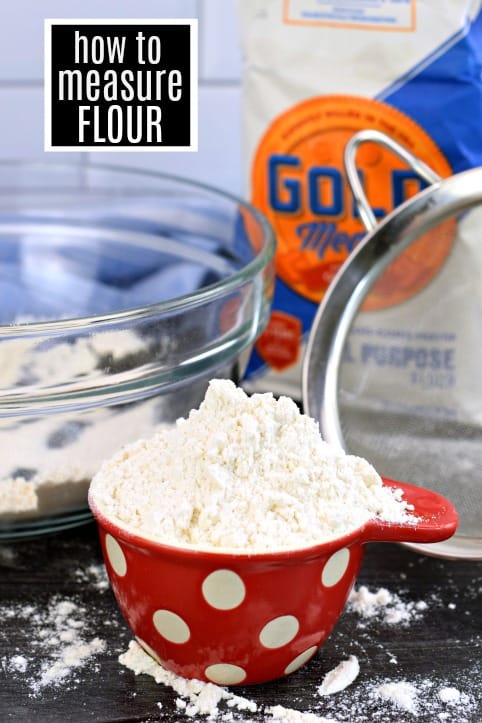
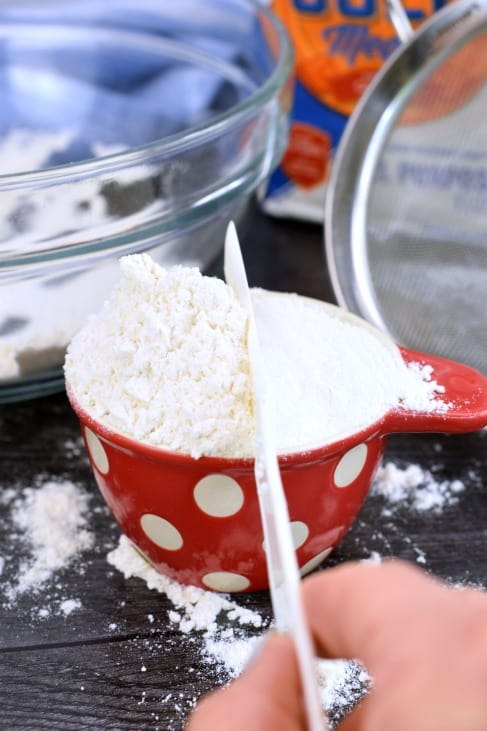
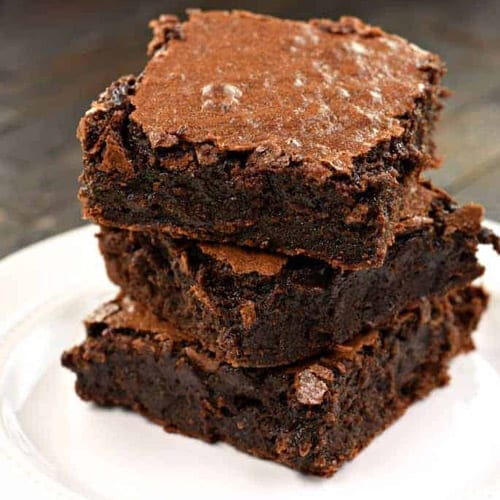
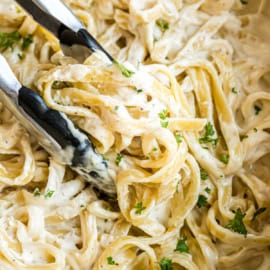
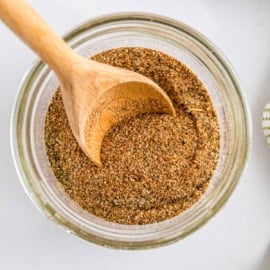
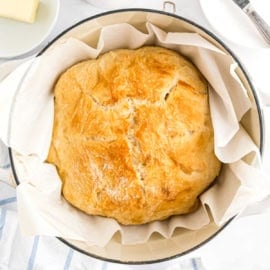
Can you make this printable? I would like to save this.
Would love to hear your thoughts on making the cake flour gluten free?
What makes a pound taste dry?
I have a question. What do zzI do if I have use gf flour. They don’t make a good cake flour.